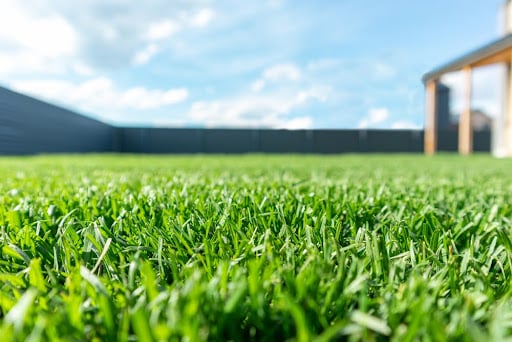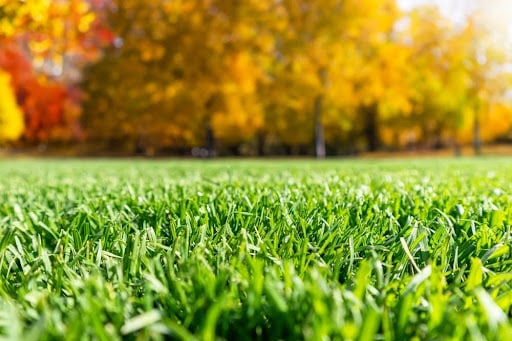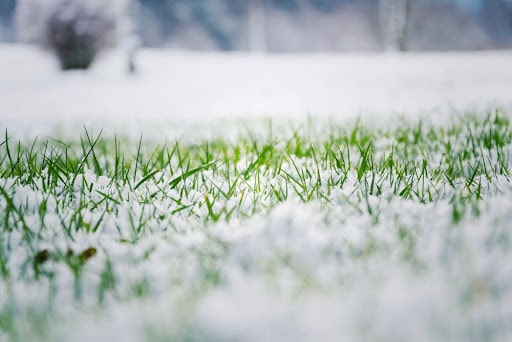Maintaining a perfect lawn requires more than just the occasional mow — it’s a year-round commitment. The secret to achieving that carpet-like lawn isn’t just in how you mow, but when and how you care for both your grass and your reel mower.
Below is a full breakdown of what your lawn needs each season, along with essential reel mower maintenance to keep your machine in peak condition. Let’s dive in and build your yearly lawn care schedule.
January – February: Dormancy
Spring: The Season of Growth
![{"type":"elementor","siteurl":"https://reelrollers.com/wp-json/","elements":[{"id":"ff114d6","elType":"widget","isInner":false,"isLocked":false,"settings":{"image":{"url":"https://reelrollers.com/wp-content/uploads/2024/07/Honda-Engine-Oil-scaled-1.jpg","id":67279,"size":"","alt":"","source":"library"},"image_size":"full","image_custom_dimension":{"width":"","height":""},"caption_source":"none","caption":"","link_to":"none","link":{"url":"","is_external":"","nofollow":"","custom_attributes":""},"open_lightbox":"default","align":"","align_tablet":"","align_mobile":"","width":{"unit":"%","size":"","sizes":[]},"width_tablet":{"unit":"%","size":"","sizes":[]},"width_mobile":{"unit":"%","size":"","sizes":[]},"space":{"unit":"%","size":"","sizes":[]},"space_tablet":{"unit":"%","size":"","sizes":[]},"space_mobile":{"unit":"%","size":"","sizes":[]},"height":{"unit":"px","size":"","sizes":[]},"height_tablet":{"unit":"px","size":"","sizes":[]},"height_mobile":{"unit":"px","size":"","sizes":[]},"object-fit":"","object-fit_tablet":"","object-fit_mobile":"","object-position":"center center","object-position_tablet":"","object-position_mobile":"","opacity":{"unit":"px","size":"","sizes":[]},"css_filters_css_filter":"","css_filters_blur":{"unit":"px","size":0,"sizes":[]},"css_filters_brightness":{"unit":"px","size":100,"sizes":[]},"css_filters_contrast":{"unit":"px","size":100,"sizes":[]},"css_filters_saturate":{"unit":"px","size":100,"sizes":[]},"css_filters_hue":{"unit":"px","size":0,"sizes":[]},"opacity_hover":{"unit":"px","size":"","sizes":[]},"css_filters_hover_css_filter":"","css_filters_hover_blur":{"unit":"px","size":0,"sizes":[]},"css_filters_hover_brightness":{"unit":"px","size":100,"sizes":[]},"css_filters_hover_contrast":{"unit":"px","size":100,"sizes":[]},"css_filters_hover_saturate":{"unit":"px","size":100,"sizes":[]},"css_filters_hover_hue":{"unit":"px","size":0,"sizes":[]},"background_hover_transition":{"unit":"px","size":"","sizes":[]},"hover_animation":"","image_border_border":"","image_border_width":{"unit":"px","top":"","right":"","bottom":"","left":"","isLinked":true},"image_border_width_tablet":{"unit":"px","top":"","right":"","bottom":"","left":"","isLinked":true},"image_border_width_mobile":{"unit":"px","top":"","right":"","bottom":"","left":"","isLinked":true},"image_border_color":"","image_border_radius":{"unit":"px","top":"","right":"","bottom":"","left":"","isLinked":true},"image_border_radius_tablet":{"unit":"px","top":"","right":"","bottom":"","left":"","isLinked":true},"image_border_radius_mobile":{"unit":"px","top":"","right":"","bottom":"","left":"","isLinked":true},"image_box_shadow_box_shadow_type":"","image_box_shadow_box_shadow":{"horizontal":0,"vertical":0,"blur":10,"spread":0,"color":"rgba(0,0,0,0.5)"},"caption_align":"","caption_align_tablet":"","caption_align_mobile":"","text_color":"","caption_background_color":"","caption_typography_typography":"","caption_typography_font_family":"","caption_typography_font_size":{"unit":"px","size":"","sizes":[]},"caption_typography_font_size_tablet":{"unit":"px","size":"","sizes":[]},"caption_typography_font_size_mobile":{"unit":"px","size":"","sizes":[]},"caption_typography_font_weight":"","caption_typography_text_transform":"","caption_typography_font_style":"","caption_typography_text_decoration":"","caption_typography_line_height":{"unit":"px","size":"","sizes":[]},"caption_typography_line_height_tablet":{"unit":"em","size":"","sizes":[]},"caption_typography_line_height_mobile":{"unit":"em","size":"","sizes":[]},"caption_typography_letter_spacing":{"unit":"px","size":"","sizes":[]},"caption_typography_letter_spacing_tablet":{"unit":"px","size":"","sizes":[]},"caption_typography_letter_spacing_mobile":{"unit":"px","size":"","sizes":[]},"caption_typography_word_spacing":{"unit":"px","size":"","sizes":[]},"caption_typography_word_spacing_tablet":{"unit":"em","size":"","sizes":[]},"caption_typography_word_spacing_mobile":{"unit":"em","size":"","sizes":[]},"caption_text_shadow_text_shadow_type":"","caption_text_shadow_text_shadow":{"horizontal":0,"vertical":0,"blur":10,"color":"rgba(0,0,0,0.3)"},"caption_space":{"unit":"px","size":"","sizes":[]},"caption_space_tablet":{"unit":"px","size":"","sizes":[]},"caption_space_mobile":{"unit":"px","size":"","sizes":[]},"_title":"","_margin":{"unit":"px","top":"","right":"","bottom":"","left":"","isLinked":true},"_margin_tablet":{"unit":"px","top":"","right":"","bottom":"","left":"","isLinked":true},"_margin_mobile":{"unit":"px","top":"","right":"","bottom":"","left":"","isLinked":true},"_padding":{"unit":"px","top":"","right":"","bottom":"","left":"","isLinked":true},"_padding_tablet":{"unit":"px","top":"","right":"","bottom":"","left":"","isLinked":true},"_padding_mobile":{"unit":"px","top":"","right":"","bottom":"","left":"","isLinked":true},"_element_width":"","_element_width_tablet":"","_element_width_mobile":"","_element_custom_width":{"unit":"%","size":"","sizes":[]},"_element_custom_width_tablet":{"unit":"px","size":"","sizes":[]},"_element_custom_width_mobile":{"unit":"px","size":"","sizes":[]},"_element_vertical_align":"","_element_vertical_align_tablet":"","_element_vertical_align_mobile":"","_position":"","_offset_orientation_h":"start","_offset_x":{"unit":"px","size":0,"sizes":[]},"_offset_x_tablet":{"unit":"px","size":"","sizes":[]},"_offset_x_mobile":{"unit":"px","size":"","sizes":[]},"_offset_x_end":{"unit":"px","size":0,"sizes":[]},"_offset_x_end_tablet":{"unit":"px","size":"","sizes":[]},"_offset_x_end_mobile":{"unit":"px","size":"","sizes":[]},"_offset_orientation_v":"start","_offset_y":{"unit":"px","size":0,"sizes":[]},"_offset_y_tablet":{"unit":"px","size":"","sizes":[]},"_offset_y_mobile":{"unit":"px","size":"","sizes":[]},"_offset_y_end":{"unit":"px","size":0,"sizes":[]},"_offset_y_end_tablet":{"unit":"px","size":"","sizes":[]},"_offset_y_end_mobile":{"unit":"px","size":"","sizes":[]},"_z_index":"","_z_index_tablet":"","_z_index_mobile":"","_element_id":"","_css_classes":"","e_display_conditions":"","jet_family_widget_is_order_orientaion":"false","jet_family_widget_order_orientaion":"","jet_family_widget_order_orientaion_tablet":"","jet_family_widget_order_orientaion_mobile":"","jet_family_widget_is_flex_basis":"false","jet_family_widget_flex_basis":{"unit":"px","size":0,"sizes":[]},"jet_family_widget_flex_basis_tablet":{"unit":"px","size":"","sizes":[]},"jet_family_widget_flex_basis_mobile":{"unit":"px","size":"","sizes":[]},"motion_fx_motion_fx_scrolling":"","motion_fx_translateY_effect":"","motion_fx_translateY_direction":"","motion_fx_translateY_speed":{"unit":"px","size":4,"sizes":[]},"motion_fx_translateY_affectedRange":{"unit":"%","size":"","sizes":{"start":0,"end":100}},"motion_fx_translateX_effect":"","motion_fx_translateX_direction":"","motion_fx_translateX_speed":{"unit":"px","size":4,"sizes":[]},"motion_fx_translateX_affectedRange":{"unit":"%","size":"","sizes":{"start":0,"end":100}},"motion_fx_opacity_effect":"","motion_fx_opacity_direction":"out-in","motion_fx_opacity_level":{"unit":"px","size":10,"sizes":[]},"motion_fx_opacity_range":{"unit":"%","size":"","sizes":{"start":20,"end":80}},"motion_fx_blur_effect":"","motion_fx_blur_direction":"out-in","motion_fx_blur_level":{"unit":"px","size":7,"sizes":[]},"motion_fx_blur_range":{"unit":"%","size":"","sizes":{"start":20,"end":80}},"motion_fx_rotateZ_effect":"","motion_fx_rotateZ_direction":"","motion_fx_rotateZ_speed":{"unit":"px","size":1,"sizes":[]},"motion_fx_rotateZ_affectedRange":{"unit":"%","size":"","sizes":{"start":0,"end":100}},"motion_fx_scale_effect":"","motion_fx_scale_direction":"out-in","motion_fx_scale_speed":{"unit":"px","size":4,"sizes":[]},"motion_fx_scale_range":{"unit":"%","size":"","sizes":{"start":20,"end":80}},"motion_fx_transform_origin_x":"center","motion_fx_transform_origin_y":"center","motion_fx_devices":["desktop","tablet","mobile"],"motion_fx_range":"","motion_fx_motion_fx_mouse":"","motion_fx_mouseTrack_effect":"","motion_fx_mouseTrack_direction":"","motion_fx_mouseTrack_speed":{"unit":"px","size":1,"sizes":[]},"motion_fx_tilt_effect":"","motion_fx_tilt_direction":"","motion_fx_tilt_speed":{"unit":"px","size":4,"sizes":[]},"handle_motion_fx_asset_loading":"","sticky":"","sticky_on":["desktop","tablet","mobile"],"sticky_offset":0,"sticky_offset_tablet":"","sticky_offset_mobile":"","sticky_effects_offset":0,"sticky_effects_offset_tablet":"","sticky_effects_offset_mobile":"","sticky_anchor_link_offset":0,"sticky_anchor_link_offset_tablet":"","sticky_anchor_link_offset_mobile":"","sticky_parent":"","_animation":"","_animation_tablet":"","_animation_mobile":"","animation_duration":"","_animation_delay":"","_transform_rotate_popover":"","_transform_rotateZ_effect":{"unit":"px","size":"","sizes":[]},"_transform_rotateZ_effect_tablet":{"unit":"deg","size":"","sizes":[]},"_transform_rotateZ_effect_mobile":{"unit":"deg","size":"","sizes":[]},"_transform_rotate_3d":"","_transform_rotateX_effect":{"unit":"px","size":"","sizes":[]},"_transform_rotateX_effect_tablet":{"unit":"deg","size":"","sizes":[]},"_transform_rotateX_effect_mobile":{"unit":"deg","size":"","sizes":[]},"_transform_rotateY_effect":{"unit":"px","size":"","sizes":[]},"_transform_rotateY_effect_tablet":{"unit":"deg","size":"","sizes":[]},"_transform_rotateY_effect_mobile":{"unit":"deg","size":"","sizes":[]},"_transform_perspective_effect":{"unit":"px","size":"","sizes":[]},"_transform_perspective_effect_tablet":{"unit":"px","size":"","sizes":[]},"_transform_perspective_effect_mobile":{"unit":"px","size":"","sizes":[]},"_transform_translate_popover":"","_transform_translateX_effect":{"unit":"px","size":"","sizes":[]},"_transform_translateX_effect_tablet":{"unit":"px","size":"","sizes":[]},"_transform_translateX_effect_mobile":{"unit":"px","size":"","sizes":[]},"_transform_translateY_effect":{"unit":"px","size":"","sizes":[]},"_transform_translateY_effect_tablet":{"unit":"px","size":"","sizes":[]},"_transform_translateY_effect_mobile":{"unit":"px","size":"","sizes":[]},"_transform_scale_popover":"","_transform_keep_proportions":"yes","_transform_scale_effect":{"unit":"px","size":"","sizes":[]},"_transform_scale_effect_tablet":{"unit":"px","size":"","sizes":[]},"_transform_scale_effect_mobile":{"unit":"px","size":"","sizes":[]},"_transform_scaleX_effect":{"unit":"px","size":"","sizes":[]},"_transform_scaleX_effect_tablet":{"unit":"px","size":"","sizes":[]},"_transform_scaleX_effect_mobile":{"unit":"px","size":"","sizes":[]},"_transform_scaleY_effect":{"unit":"px","size":"","sizes":[]},"_transform_scaleY_effect_tablet":{"unit":"px","size":"","sizes":[]},"_transform_scaleY_effect_mobile":{"unit":"px","size":"","sizes":[]},"_transform_skew_popover":"","_transform_skewX_effect":{"unit":"px","size":"","sizes":[]},"_transform_skewX_effect_tablet":{"unit":"deg","size":"","sizes":[]},"_transform_skewX_effect_mobile":{"unit":"deg","size":"","sizes":[]},"_transform_skewY_effect":{"unit":"px","size":"","sizes":[]},"_transform_skewY_effect_tablet":{"unit":"deg","size":"","sizes":[]},"_transform_skewY_effect_mobile":{"unit":"deg","size":"","sizes":[]},"_transform_flipX_effect":"","_transform_flipY_effect":"","_transform_rotate_popover_hover":"","_transform_rotateZ_effect_hover":{"unit":"px","size":"","sizes":[]},"_transform_rotateZ_effect_hover_tablet":{"unit":"deg","size":"","sizes":[]},"_transform_rotateZ_effect_hover_mobile":{"unit":"deg","size":"","sizes":[]},"_transform_rotate_3d_hover":"","_transform_rotateX_effect_hover":{"unit":"px","size":"","sizes":[]},"_transform_rotateX_effect_hover_tablet":{"unit":"deg","size":"","sizes":[]},"_transform_rotateX_effect_hover_mobile":{"unit":"deg","size":"","sizes":[]},"_transform_rotateY_effect_hover":{"unit":"px","size":"","sizes":[]},"_transform_rotateY_effect_hover_tablet":{"unit":"deg","size":"","sizes":[]},"_transform_rotateY_effect_hover_mobile":{"unit":"deg","size":"","sizes":[]},"_transform_perspective_effect_hover":{"unit":"px","size":"","sizes":[]},"_transform_perspective_effect_hover_tablet":{"unit":"px","size":"","sizes":[]},"_transform_perspective_effect_hover_mobile":{"unit":"px","size":"","sizes":[]},"_transform_translate_popover_hover":"","_transform_translateX_effect_hover":{"unit":"px","size":"","sizes":[]},"_transform_translateX_effect_hover_tablet":{"unit":"px","size":"","sizes":[]},"_transform_translateX_effect_hover_mobile":{"unit":"px","size":"","sizes":[]},"_transform_translateY_effect_hover":{"unit":"px","size":"","sizes":[]},"_transform_translateY_effect_hover_tablet":{"unit":"px","size":"","sizes":[]},"_transform_translateY_effect_hover_mobile":{"unit":"px","size":"","sizes":[]},"_transform_scale_popover_hover":"","_transform_keep_proportions_hover":"yes","_transform_scale_effect_hover":{"unit":"px","size":"","sizes":[]},"_transform_scale_effect_hover_tablet":{"unit":"px","size":"","sizes":[]},"_transform_scale_effect_hover_mobile":{"unit":"px","size":"","sizes":[]},"_transform_scaleX_effect_hover":{"unit":"px","size":"","sizes":[]},"_transform_scaleX_effect_hover_tablet":{"unit":"px","size":"","sizes":[]},"_transform_scaleX_effect_hover_mobile":{"unit":"px","size":"","sizes":[]},"_transform_scaleY_effect_hover":{"unit":"px","size":"","sizes":[]},"_transform_scaleY_effect_hover_tablet":{"unit":"px","size":"","sizes":[]},"_transform_scaleY_effect_hover_mobile":{"unit":"px","size":"","sizes":[]},"_transform_skew_popover_hover":"","_transform_skewX_effect_hover":{"unit":"px","size":"","sizes":[]},"_transform_skewX_effect_hover_tablet":{"unit":"deg","size":"","sizes":[]},"_transform_skewX_effect_hover_mobile":{"unit":"deg","size":"","sizes":[]},"_transform_skewY_effect_hover":{"unit":"px","size":"","sizes":[]},"_transform_skewY_effect_hover_tablet":{"unit":"deg","size":"","sizes":[]},"_transform_skewY_effect_hover_mobile":{"unit":"deg","size":"","sizes":[]},"_transform_flipX_effect_hover":"","_transform_flipY_effect_hover":"","_transform_transition_hover":{"unit":"px","size":"","sizes":[]},"motion_fx_transform_x_anchor_point":"","motion_fx_transform_x_anchor_point_tablet":"","motion_fx_transform_x_anchor_point_mobile":"","motion_fx_transform_y_anchor_point":"","motion_fx_transform_y_anchor_point_tablet":"","motion_fx_transform_y_anchor_point_mobile":"","_background_background":"","_background_color":"","_background_color_stop":{"unit":"%","size":0,"sizes":[]},"_background_color_stop_tablet":{"unit":"%"},"_background_color_stop_mobile":{"unit":"%"},"_background_color_b":"#f2295b","_background_color_b_stop":{"unit":"%","size":100,"sizes":[]},"_background_color_b_stop_tablet":{"unit":"%"},"_background_color_b_stop_mobile":{"unit":"%"},"_background_gradient_type":"linear","_background_gradient_angle":{"unit":"deg","size":180,"sizes":[]},"_background_gradient_angle_tablet":{"unit":"deg"},"_background_gradient_angle_mobile":{"unit":"deg"},"_background_gradient_position":"center center","_background_gradient_position_tablet":"","_background_gradient_position_mobile":"","_background_image":{"url":"","id":"","size":""},"_background_image_tablet":{"url":"","id":"","size":""},"_background_image_mobile":{"url":"","id":"","size":""},"_background_position":"","_background_position_tablet":"","_background_position_mobile":"","_background_xpos":{"unit":"px","size":0,"sizes":[]},"_background_xpos_tablet":{"unit":"px","size":0,"sizes":[]},"_background_xpos_mobile":{"unit":"px","size":0,"sizes":[]},"_background_ypos":{"unit":"px","size":0,"sizes":[]},"_background_ypos_tablet":{"unit":"px","size":0,"sizes":[]},"_background_ypos_mobile":{"unit":"px","size":0,"sizes":[]},"_background_attachment":"","_background_repeat":"","_background_repeat_tablet":"","_background_repeat_mobile":"","_background_size":"","_background_size_tablet":"","_background_size_mobile":"","_background_bg_width":{"unit":"%","size":100,"sizes":[]},"_background_bg_width_tablet":{"unit":"px","size":"","sizes":[]},"_background_bg_width_mobile":{"unit":"px","size":"","sizes":[]},"_background_video_link":"","_background_video_start":"","_background_video_end":"","_background_play_once":"","_background_play_on_mobile":"","_background_privacy_mode":"","_background_video_fallback":{"url":"","id":"","size":""},"_background_slideshow_gallery":[],"_background_slideshow_loop":"yes","_background_slideshow_slide_duration":5000,"_background_slideshow_slide_transition":"fade","_background_slideshow_transition_duration":500,"_background_slideshow_background_size":"","_background_slideshow_background_size_tablet":"","_background_slideshow_background_size_mobile":"","_background_slideshow_background_position":"","_background_slideshow_background_position_tablet":"","_background_slideshow_background_position_mobile":"","_background_slideshow_lazyload":"","_background_slideshow_ken_burns":"","_background_slideshow_ken_burns_zoom_direction":"in","_background_hover_background":"","_background_hover_color":"","_background_hover_color_stop":{"unit":"%","size":0,"sizes":[]},"_background_hover_color_stop_tablet":{"unit":"%"},"_background_hover_color_stop_mobile":{"unit":"%"},"_background_hover_color_b":"#f2295b","_background_hover_color_b_stop":{"unit":"%","size":100,"sizes":[]},"_background_hover_color_b_stop_tablet":{"unit":"%"},"_background_hover_color_b_stop_mobile":{"unit":"%"},"_background_hover_gradient_type":"linear","_background_hover_gradient_angle":{"unit":"deg","size":180,"sizes":[]},"_background_hover_gradient_angle_tablet":{"unit":"deg"},"_background_hover_gradient_angle_mobile":{"unit":"deg"},"_background_hover_gradient_position":"center center","_background_hover_gradient_position_tablet":"","_background_hover_gradient_position_mobile":"","_background_hover_image":{"url":"","id":"","size":""},"_background_hover_image_tablet":{"url":"","id":"","size":""},"_background_hover_image_mobile":{"url":"","id":"","size":""},"_background_hover_position":"","_background_hover_position_tablet":"","_background_hover_position_mobile":"","_background_hover_xpos":{"unit":"px","size":0,"sizes":[]},"_background_hover_xpos_tablet":{"unit":"px","size":0,"sizes":[]},"_background_hover_xpos_mobile":{"unit":"px","size":0,"sizes":[]},"_background_hover_ypos":{"unit":"px","size":0,"sizes":[]},"_background_hover_ypos_tablet":{"unit":"px","size":0,"sizes":[]},"_background_hover_ypos_mobile":{"unit":"px","size":0,"sizes":[]},"_background_hover_attachment":"","_background_hover_repeat":"","_background_hover_repeat_tablet":"","_background_hover_repeat_mobile":"","_background_hover_size":"","_background_hover_size_tablet":"","_background_hover_size_mobile":"","_background_hover_bg_width":{"unit":"%","size":100,"sizes":[]},"_background_hover_bg_width_tablet":{"unit":"px","size":"","sizes":[]},"_background_hover_bg_width_mobile":{"unit":"px","size":"","sizes":[]},"_background_hover_video_link":"","_background_hover_video_start":"","_background_hover_video_end":"","_background_hover_play_once":"","_background_hover_play_on_mobile":"","_background_hover_privacy_mode":"","_background_hover_video_fallback":{"url":"","id":"","size":""},"_background_hover_slideshow_gallery":[],"_background_hover_slideshow_loop":"yes","_background_hover_slideshow_slide_duration":5000,"_background_hover_slideshow_slide_transition":"fade","_background_hover_slideshow_transition_duration":500,"_background_hover_slideshow_background_size":"","_background_hover_slideshow_background_size_tablet":"","_background_hover_slideshow_background_size_mobile":"","_background_hover_slideshow_background_position":"","_background_hover_slideshow_background_position_tablet":"","_background_hover_slideshow_background_position_mobile":"","_background_hover_slideshow_lazyload":"","_background_hover_slideshow_ken_burns":"","_background_hover_slideshow_ken_burns_zoom_direction":"in","_background_hover_transition":{"unit":"px","size":"","sizes":[]},"_border_border":"","_border_width":{"unit":"px","top":"","right":"","bottom":"","left":"","isLinked":true},"_border_width_tablet":{"unit":"px","top":"","right":"","bottom":"","left":"","isLinked":true},"_border_width_mobile":{"unit":"px","top":"","right":"","bottom":"","left":"","isLinked":true},"_border_color":"","_border_radius":{"unit":"px","top":"","right":"","bottom":"","left":"","isLinked":true},"_border_radius_tablet":{"unit":"px","top":"","right":"","bottom":"","left":"","isLinked":true},"_border_radius_mobile":{"unit":"px","top":"","right":"","bottom":"","left":"","isLinked":true},"_box_shadow_box_shadow_type":"","_box_shadow_box_shadow":{"horizontal":0,"vertical":0,"blur":10,"spread":0,"color":"rgba(0,0,0,0.5)"},"_box_shadow_box_shadow_position":" ","_border_hover_border":"","_border_hover_width":{"unit":"px","top":"","right":"","bottom":"","left":"","isLinked":true},"_border_hover_width_tablet":{"unit":"px","top":"","right":"","bottom":"","left":"","isLinked":true},"_border_hover_width_mobile":{"unit":"px","top":"","right":"","bottom":"","left":"","isLinked":true},"_border_hover_color":"","_border_radius_hover":{"unit":"px","top":"","right":"","bottom":"","left":"","isLinked":true},"_border_radius_hover_tablet":{"unit":"px","top":"","right":"","bottom":"","left":"","isLinked":true},"_border_radius_hover_mobile":{"unit":"px","top":"","right":"","bottom":"","left":"","isLinked":true},"_box_shadow_hover_box_shadow_type":"","_box_shadow_hover_box_shadow":{"horizontal":0,"vertical":0,"blur":10,"spread":0,"color":"rgba(0,0,0,0.5)"},"_box_shadow_hover_box_shadow_position":" ","_border_hover_transition":{"unit":"px","size":"","sizes":[]},"_mask_switch":"","_mask_shape":"circle","_mask_image":{"url":"","id":"","size":""},"_mask_notice":"","_mask_size":"contain","_mask_size_tablet":"","_mask_size_mobile":"","_mask_size_scale":{"unit":"%","size":100,"sizes":[]},"_mask_size_scale_tablet":{"unit":"px","size":"","sizes":[]},"_mask_size_scale_mobile":{"unit":"px","size":"","sizes":[]},"_mask_position":"center center","_mask_position_tablet":"","_mask_position_mobile":"","_mask_position_x":{"unit":"%","size":0,"sizes":[]},"_mask_position_x_tablet":{"unit":"px","size":"","sizes":[]},"_mask_position_x_mobile":{"unit":"px","size":"","sizes":[]},"_mask_position_y":{"unit":"%","size":0,"sizes":[]},"_mask_position_y_tablet":{"unit":"px","size":"","sizes":[]},"_mask_position_y_mobile":{"unit":"px","size":"","sizes":[]},"_mask_repeat":"no-repeat","_mask_repeat_tablet":"","_mask_repeat_mobile":"","hide_desktop":"","hide_tablet":"","hide_mobile":"","_attributes":"","custom_css":""},"defaultEditSettings":{"defaultEditRoute":"content"},"elements":[],"widgetType":"image","editSettings":{"defaultEditRoute":"content","panel":{"activeTab":"content","activeSection":"section_image"}},"htmlCache":""}]}](https://reelrollers.com/wp-content/uploads/2024/11/spring-lawn-care.jpg)
Spring is when your lawn wakes up, and it’s prime time to set the foundation for a healthy, lush yard. As temperatures rise and grass begins to grow, you’ll need to kickstart your mowing and lawn care routine. But before your mower touches the grass, a little prep goes a long way.
March – April: Pre-Growing Season Scalping and Mower Preparation
Scalp your lawn: While your grass is still dormant, scalp your lawn in March to remove thatch and encourage new growth. Scalping involves mowing as low as possible to the soil surface. After scalping, there’s a 3–4 week period before the grass begins to green up and is ready for your first regular cut.
How to Scalp Your Lawn
Post-scalping maintenance:
- Clean and inspect: Thoroughly clean your mower to remove any grass clippings, dirt, or rust that may have accumulated during the previous season. Use a brush or compressed air to get into hard-to-reach areas and a degreaser for stubborn residue. After cleaning, carefully inspect the mower for any signs of wear, damage, or loose bolts. Pay special attention to the blades, reel, bedknife, and engine components to identify any parts that may need repair or replacement.
- Replace oil, air filter, and spark plug: Scalping generates dust and debris, so it’s the ideal time to replace these components with new ones from your service kit.
- Sharpen and adjust the reel and bedknife: Scalping dulls the blades as they cut close to the soil, sometimes hitting the dirt. Use the reel and bedknife you ended the previous season with for scalping. Afterward, backlap or professionally sharpen the reel and bedknife to prepare for the green cutting season with sharp equipment. At this stage, check the contact between the reel and bedknife to ensure they are aligned correctly. An ideal contact point is where the reel lightly touches the bedknife, creating a shearing action that cuts the grass cleanly.
How to Backlap a Reel Mower
- Lubrication: Apply lubricant to all moving parts, including the reel bearings, bushings, and drive chains. Lubrication prevents corrosion, minimizes friction, and ensures smooth operation when the mower is back in use. Use high-quality grease for bearings and oil for drive chains.
- Check belt and/or chain tension: Inspect the drive belt and reel belt for cracks, fraying, or signs of wear. If the belts are loose, adjust the tension. Proper belt tension ensures efficient power transfer and prevents slippage, which can negatively affect mowing performance.
- Height adjustment: With the arrival of spring, set the cutting height of your mower to match early-season mowing needs. Grass grows at different rates depending on the species, and cutting too low can stress the grass, especially as it’s just starting to green up. A general rule of thumb is to maintain a cutting height of around 1 to 3.5 inches for most grass types in early spring. Adjust your mower accordingly to encourage healthy growth while avoiding scalping or damaging the grass. Use a height of cut sticker to follow your progress through the year.
- Check front roller bearings and drive systems: As you prepare for the growing season, ensure that the front roller bearings and drive systems are functioning smoothly. Inspect the roller bearings for any signs of wear, play, or damage, and lubricate them as needed.
A properly functioning front roller system will help maintain the correct cutting height and give you those beautiful lawn stripes. Additionally, check the drive systems for proper alignment and tightness, as any issues here can lead to reduced efficiency and potential breakdowns during peak mowing season. Regular maintenance at this stage will help ensure that your mower operates smoothly and effectively as you transition into the busy growing season.
Lawn Care Tasks
- Fertilize: Early spring is the perfect time for a slow-release fertilizer to give your grass the nutrients it needs for steady growth. Apply it after aerating so the nutrients penetrate the soil effectively.
Summer: Keeping Your Lawn Green and Stress-Free

Summer is when your lawn is at its peak growth, but it’s also when it faces the most stress — from heat, drought, and heavy foot traffic. Proper mowing and care during these months are crucial to keep it looking vibrant. Likewise, your reel mower needs regular maintenance to keep pace with the frequent mowing sessions.
May – June: Peak Growing Season Maintenance
- Regular inspection: During the peak growing season, it’s essential to conduct regular inspections of your mower to ensure it remains in top condition. Check for any debris build-up on the mower deck, especially around the blades and undercarriage, as this can hinder performance and affect cutting efficiency.
Look for loose bolts or screws, particularly on the reel and bedknife assembly, and tighten them as needed to prevent parts from vibrating loose during operation. Additionally, inspect the overall wear on components like belts, bearings, and wheels. Addressing any issues early can prevent more significant problems later in the season.
- Reel and bedknife sharpness: Ensure that both the reel and bedknife are sharp for optimal mowing performance. Regular mowing during May and June can lead to wear on the blades, so frequent checks for sharpness are crucial. Dull blades can lead to uneven cuts and stress the grass, making it more susceptible to disease. If you find the blades have lost their sharp edge, sharpen them or consider professional sharpening to maintain a precise cut.
- Fuel system check: As the mowing season picks up, inspect the fuel system for any leaks, blockages, or issues with fuel lines. Ensure that the fuel tank is clean and free of debris, and replace fuel filters if you notice any signs of clogging. Stale fuel can also hinder engine performance, so if your mower has been sitting for a while, consider draining the old fuel and replacing it with fresh gasoline mixed with a fuel stabilizer to ensure optimal engine operation.
- Grass collection system: If your mower is equipped with a grass collection system, make sure it’s emptied regularly and functioning correctly. A full or clogged grass catcher can hinder the mower’s performance, making it less efficient and leading to a messy lawn. Inspect the collection bag or container for tears or blockages, and clean out any debris that may accumulate. Ensuring that the grass collection system is in good working order will help keep your lawn looking tidy and prevent clippings from returning to the lawn, which can promote thatch build-up.
For even better results, invest in a Grass Topper made by us here at Reel Rollers. It will stop your cut grass from spilling.
Lawncare Tasks
- Dethatch and aerate: After winter, thatch (a layer of dead grass and roots) can build up. Dethatching your lawn helps loosen compacted soil and allows nutrients to reach the roots. Aerating (poking holes in the soil) helps with water and fertilizer absorption.
July – August: Mid-Season Maintenance
- Lubrication: During the busy summer months, it’s crucial to reapply lubricant to all moving parts of your mower to ensure it continues to operate smoothly. Increased use can lead to more wear and tear, making regular lubrication vital for components like the reel, bearings, drive chains, and pivot points.
Use high-quality lubricants appropriate for each part, and pay special attention to areas that may have collected dust or debris, as these can interfere with proper functioning. Proper lubrication will not only enhance performance but also extend the lifespan of your mower by reducing friction and preventing corrosion.
- Backlapping: As you mow more frequently during the growing season, consider backlapping again if you notice the mower blades showing signs of dullness. Dull blades can tear grass rather than cut it cleanly, leading to a less healthy lawn.
Backlapping is a gentle method of sharpening the reel blades without the need for complete removal, ensuring that they stay effective while minimizing wear. It’s a good practice to incorporate this into your maintenance routine at least once or twice during the peak season to maintain optimal cutting performance.
Lawn Care Tasks
- Watering: Water your lawn deeply but less frequently. Aim for about 1 inch of water per week, either from rainfall or irrigation. The best time to water is early in the morning, before the heat of the day.
- Fertilize (sparingly): Apply a light summer fertilizer to provide essential nutrients, but be cautious — too much nitrogen can cause stress in the heat.
Grass Mowing Height Guide
Fall: The Season for Repair and Recovery

As summer winds down and temperatures cool, your lawn enters a period of recovery. Fall is one of the best times to prep your lawn for the months ahead — especially if you want to set it up for success in the spring. Your reel mower also needs a bit of TLC as you start to use it less frequently.
September – October: Pre-Dormancy Preparation
- Oil change: As you prepare to put your mower away for the winter, change the oil to keep the engine in good condition. Old oil can accumulate contaminants and lead to increased wear on engine components. Replace it with fresh oil, following the manufacturer’s specifications.
Additionally, inspect the air filter to ensure it is clean and functioning correctly. A clean air filter promotes efficient engine operation and prevents dirt and debris from entering the engine. Taking these steps before winter storage will help protect your mower and ensure it starts easily when you bring it out for the next growing season.
Lawn Care Tasks
- Overseed and fertilize: Fall is prime time for overseeding and fertilizing. The cooler weather helps new grass establish itself before winter. Apply a slow-release fertilizer to encourage root growth.
- Leaf cleanup: Don’t let leaves sit on your lawn for too long. They block sunlight and trap moisture, which can lead to mold and disease. Mulch them with your reel mower or rake them up.
How to Change the Oil and Lubricate Your Reel Mower
Winter (December-January): The Off-Season for Your Lawn

While your lawn may be dormant, there’s still plenty to do to ensure it wakes up in top form come spring. Winter is also the time to focus on caring for and storing your reel mower properly, so it stays in prime condition during the colder months.
November — December: Storage and Final Maintenance
- Fuel system draining: As winter approaches, it’s essential to either drain the fuel system or add a fuel stabilizer to your mower’s fuel tank. If you choose to drain the fuel, run the engine until it uses up the remaining gas, ensuring that no fuel sits stagnant in the system over the winter months.
Alternatively, if you prefer to keep fuel in the tank, adding a fuel stabilizer helps prevent degradation and varnish formation, which can clog the fuel system and carburetor. This step is crucial for ensuring that your mower starts easily in the spring.
- Engine and chassis cleaning: Before storing your mower for the winter, take the time to thoroughly clean both the engine and chassis. Remove any grass clippings, dirt, and debris that may have accumulated during the mowing season. Use a brush or compressed air to clean hard-to-reach areas, and consider using a degreaser for any stubborn build-up. This cleaning process helps prevent rust and corrosion and ensures that your mower will be in top condition when it’s time to use it again.
- Storage: Proper storage is key to maintaining your mower’s longevity. Store the mower in a dry, covered area such as a garage or shed to protect it from moisture, which can lead to rust and deterioration. If possible, elevate the mower off the ground to prevent moisture from seeping in from below.
Additionally, consider using a mower cover for added protection against dust, dirt, and environmental elements. This extra layer of protection helps keep the mower clean and ready for action when spring arrives, ensuring you can hit the ground running with a well-maintained machine.
Lawn Care Tasks
- Minimal maintenance: Once winter hits, your grass is dormant. Avoid mowing or fertilizing during this time — your lawn is taking a much-needed break.
- Avoid heavy traffic: Try not to walk on your lawn too much in the winter, especially if it’s frosty. Foot traffic can damage grass blades and make it harder for them to recover in spring.
How to Winterize Your Reel Mower
Maintaining a beautiful lawn and a well-functioning reel mower requires planning and consistent care throughout the year. By following this month-by-month guide, you can ensure that both your lawn and your mower stay in peak condition from one season to the next.
Stay proactive, schedule your maintenance, and your lawn and mower will reward you with lasting performance and beauty year-round.
For more tips on reel mower maintenance and lawn care, visit Reel Rollers and subscribe to the Reel Rollers YouTube channel for the latest how-to videos.

